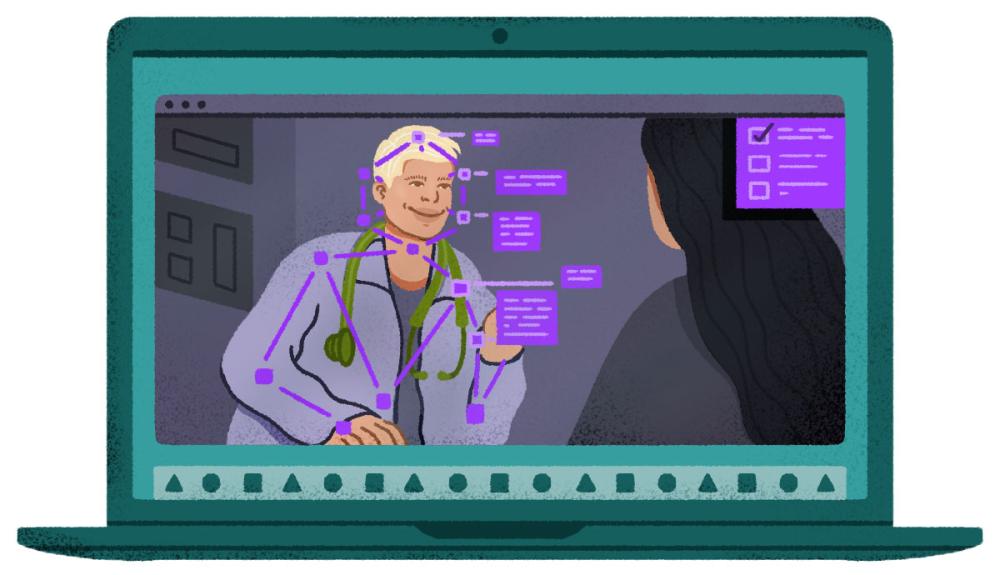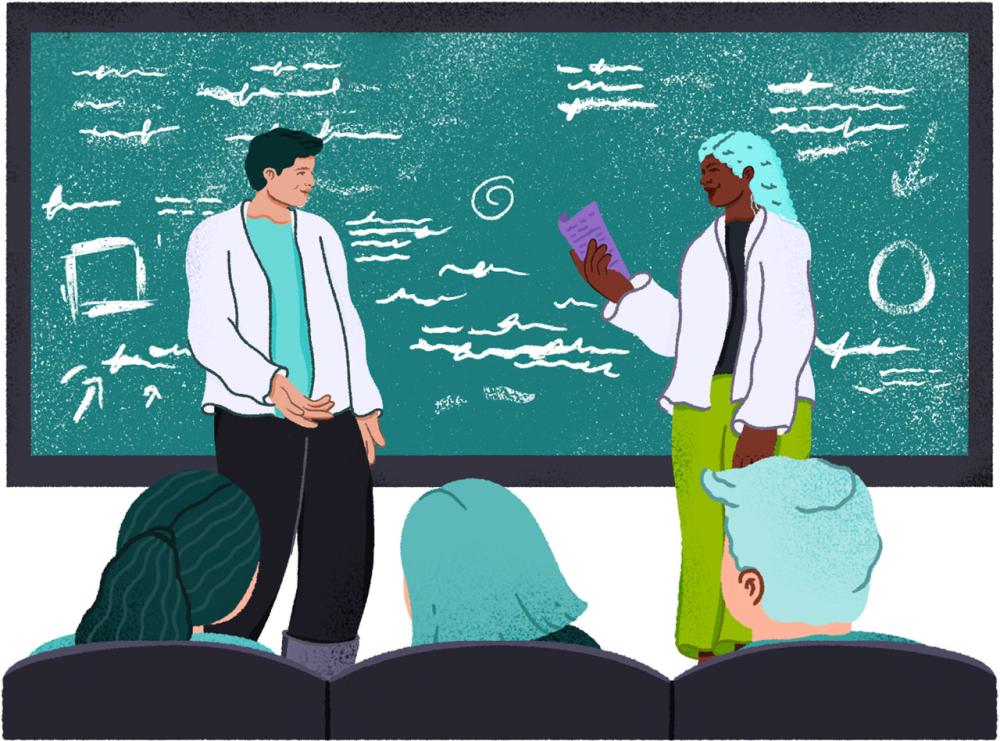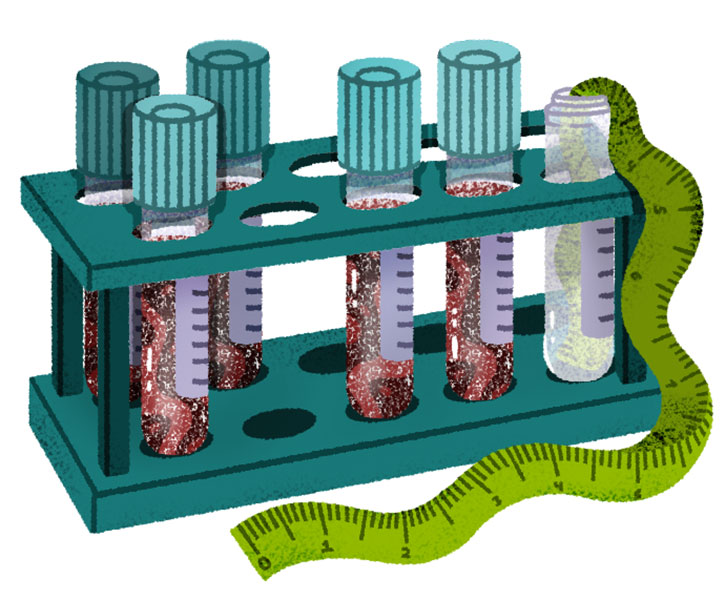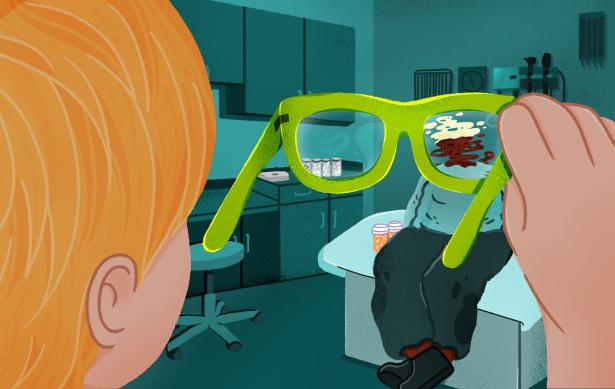Before being diagnosed with an autoimmune disease several years ago, Linda Chastine says she was skinny. But the lifesaving steroid treatment for her condition made the Seattle community organizer gain roughly 45 kilograms in 1 year. Yet her doctors often fail to recognize the relationship between the autoimmune condition, her medication, and the weight gain. Instead they routinely bring up being overweight as her main problem, she says, and suggest she count calories. “It’s a very traumatic experience to have a doctor dismiss a lot of your complaints or concerns based on weight,” Chastine says.
Stories like Chastine’s are unfortunately common, say researchers who examine how implicit biases—unconscious assumptions based on skin color, gender, sexual preference, or appearance—in health care providers affect patient care. Chastine, who is Black and queer, is now channeling her troubled experience with the medical establishment to aid studies of implicit bias and identify ways to counter it. She is part of a 5-year collaboration between various departments at both the University of Washington (UW) and the University of California, San Diego (UCSD), in which a team is developing a tool to give physicians feedback in real time during patient visits—or shortly after—on what they can do to mitigate their unconscious prejudices.
That project, called UnBIASED (Understanding Biased patient-provider Interaction and Supporting Enhanced Discourse), is at the leading edge of a wave of efforts to counter the negative effects of bias in medicine. From creating new models of education and training, to developing accurate tests to objectively measure pain, scientists are working to provide health care workers—and institutions—with the tools to diminish bias and provide equitable care. Although it might be too early to know whether these interventions are successful and long-lasting, some strategies appear promising.
“We’re just looking at one little slice” of how to eradicate implicit bias in health care, says Andrea Hartzler, the UW biomedical informatician who leads UnBIASED, which is funded by the National Library of Medicine. “It’s going to take a tool chest of all kinds of different interventions.” One key component, she adds, is to go beyond the individual doctor or nurse and target structural issues within their institutions that promote these biases.
EVERYONE HAS prejudices that affect how they perceive and behave with others. And although many people might be aware of some—their explicit or conscious biases—and intentionally try to compensate for them, other hidden ones still lurk and can influence attitudes and interactions.
These implicit biases are widespread among health care providers, as Janice Sabin discovered in the late 2000s. In her research back then —as a social welfare Ph.D. student at UW—Sabin had asked 95 doctors from the Department of Pediatrics at Seattle Children’s Hospital to take a test that would determine whether they had a “hidden” bias toward a certain race. “I was terrified,” Sabin, now a biomedical informatics professor at UW, recalls. “This wasn’t just asking them questions about bias and racism, this was actually going into their mind.”
Sabin used the well-known Implicit Association Test (IAT), which determines how strongly an individual associates a trait—such as race or sexual orientation—with a subjective value, such as “good” or “bad.” The quicker you match each concept to a subjective value, the greater the association and the higher your score, which broadly indicates a stronger implicit association between the trait and value.
Sabin found the doctors she tested—a few of them nonwhite—had a clear, unconscious preference for white people over Black people. It was one of the first studies showing health care providers had unintentional racial prejudices. “It was kind of scary because this was a concept completely foreign to people at the time,” Sabin says.
The IAT remains a standard tool for measuring implicit bias, although some have criticized it because it has to be taken several times to reveal a reliable result, as people’s scores could change every time they take it. Even when people come out neutral on race, most studies will reveal some kind of unconscious prejudice, such as an unrecognized preference of certain sexual orientations or religions. “We all have some kind of hidden bias,” Sabin says. Not only are these biases present among health care providers, but research suggests they are likely affecting diagnoses and treatment decisions, and in turn contributing to health disparities affecting people of color, women, and members of the LGBTQ+ community and other historically marginalized groups.

Thumy Phan
A 2020 study by Rachel Hardeman, a reproductive health equity researcher at the University of Minnesota’s Center for Antiracism Research for Health Equity, and colleagues showed Black newborns are twice as likely to die in the care of a white physician than a Black doctor, for instance. Another study from 2022 found women and people of color with chest pain wait longer to be treated in the emergency room compared with white men.
Pain assessment by health care providers has become a fertile ground for research into unconscious medical prejudices and a classic example of the way bias undermines the care of minorities. Implicit bias often shows up when there’s no objective test or measurement for a symptom, and that’s the case for pain. “Pain is subjective and how people overtly show signs of pain varies across different cultures, across gender identities,” says Kristyn Smith, an emergency physician at the University of Pennsylvania.
Previous studies have shown physicians tend to underestimate pain experienced by women and people of color and discount their complaints. In mock medical cases, reported in 2016 in the Proceedings of the National Academy of Sciences, white medical residents estimated Black patients felt less pain than white ones, and as a result, made less effective treatment recommendations for Black people. But this bias isn’t limited to doctors: A study from 2021 showed lay people underestimate the pain in women patients compared with men patients, opting to treat women with psychotherapy and men with painkillers.
“My personal experience is that it’s not something that is due to people necessarily having prejudices or wanting to do a bad job,” says Indiana University, Indianapolis, psychiatrist Alexander Niculescu III. “It’s just that lacking objective tools, sometimes people can make assumptions that are in the wrong direction.”
Implicit biases can also affect health outcomes simply because patients feel discriminated against and don’t come back to their doctor. A 2017 systematic review of research on implicit bias in health care providers examined 42 published studies conducted mainly in the United States but also in nine other countries, and concluded there was “a significant positive relationship between level of implicit bias and lower quality of care.”
Many other inequities, such as poverty and redlining, prevent certain groups from accessing good health care, Smith says. “If you include the biases of your health care professionals, then that creates a perfect storm for health care disparities to continue.”
SCIENTISTS HAVE long studied several kinds of interventions that attempt to “erase” implicit bias, but few of them have shown lasting effects. “There is a robust science around implicit bias,” Hardeman says. But, “There is no gold standard for how to intervene right now. It’s imprinted in our brains in ways that make it really hard.”
Simple interventions can dampen biases, as measured by successive IATs, but the changes are usually modest and don’t persist. In a 2001 experiment, for example, researchers showed images of admired Black people—such as Denzel Washington or Colin Powell—versus disliked white individuals—such as Jeffrey Dahmer and Howard Stern—to study participants, and saw that this exposure significantly weakened a pro-white preference for 24 hours, but not for much longer.
Simply asking health care providers to take the IAT without providing context or tools can be counterproductive. A study in 2015 indicated that when medical students are told about their unconscious bias without direction on overcoming it, they tend to get anxious, confused, and nervous interacting with patients who belong to social groups different from their own. That’s why even a quick training on skills to mitigate implicit bias can go a long way, according to Hardeman.
So, Hartzler and others are developing feedback tools that will help clinicians confront and make sense of their biases. The team conducted interviews with a small group of primary care doctors to get a sense of the best way to provide feedback to providers on implicit bias. The researchers also spoke with traditionally marginalized groups, including people of color and LGBTQ+ individuals, to learn about biased behaviors that may be on display in patient-doctor interactions. The UnBIASED team then recruited physicians and “community champions,” including Chastine, to help design culturally sensitive experiments that could reveal personal biases. “It’s really great to have all these minds that want to be innovative about how we are addressing bias,” Chastine says.
Brian Wood, an infectious disease clinician with UW and Harborview Medical Center, is one such physician volunteer with UnBIASED. Wood, who primarily sees people with an HIV diagnosis, says his physicians group serves a diverse population who often feel stigmatized by doctors. “I often hear from Black patients how they feel discriminated against,” says Wood, who is white. “And my transgender patients often express how fearful they are of seeking care from any provider they don’t know,” because of painful past encounters with the medical establishment, he says.
That made him eager to take part in UnBIASED’s first experiments, which rely on cameras installed in exam rooms. The cameras in Wood’s Seattle clinic captured interactions between him and his patients, including close-ups of his and their facial features and body language. “I found quite quickly that the patient and I both forgot the cameras were there and just fell into our usual routine and conversation,” he says.
The UnBIASED team then used a type of artificial intelligence (AI) known as machine learning to analyze patterns in the recordings and identify nonverbal cues that could indicate implicit bias. In one of the clips Wood was later shown, he was talking with a patient while leaning forward with his arms crossed on the desk, body language he worries may have made him seem closed and unapproachable. “I reflected on my own as to how that body language might be felt and perceived by the patient,” he says. Wood, who hopes to improve his demeanor, says he welcomed such feedback and is eager for more.
“Reflecting on possible negative moments during a visit was not easy, but felt important and valuable,” Wood says.

Thumy Phan
The team is now working on translating the experiment’s results into feedback like “digital nudges”—such as an icon that pops onto the computer screen, a wearable device, or other mechanism telling physicians to interrupt patients less or look them in the eye more often. But the UnBIASED team still has challenges interpreting the data in the recordings. For instance, nonverbal signals are nuanced, Hartzler says. “It’s not always as simple as ‘more interruptions means bad.’”
Others using computer software to research implicit bias in medicine are also struggling to give physicians meaningful feedback. Nao Hagiwara, a social and health psychologist at Virginia Commonwealth University, and her team are analyzing dozens of nonverbal and verbal communication behaviors, such as facial expressions and voice changes, in recordings of primary care physicians’ interactions with people who have type 2 diabetes. Their software hasn’t yet identified behaviors that could clearly be linked to bias or had an adverse effect in the patient’s outcome. One reason for this murkiness, Hagiwara suggests, is that multiple different cues likely interact to influence patient outcomes whereas studies so far tend to analyze the impact of only one behavior at a time.
Smith is working on a different type of implicit bias intervention: creating clinical simulations from her time working in a trauma center that served a majority Black population. Such emergency departments, where doctors and nurses are often overworked and in a high-stress environment, are ripe for implicit bias to kick in easily, Smith says. She recalls an instance when a Black man arrived at the hospital with a gunshot wound. He died, and shortly after, a social worker came up to her and said, “He was always here … he was just shot 2 weeks ago. … I wonder what he did this time.”
Smith recalls that the social worker was normally a fierce advocate for patients, but says that comment was steeped in bias because it suggested the gunshot victim had done something wrong and deserved his fate—an attitude that could affect care. But a gunshot victims’ actions should not affect their care, Smith stresses. “Patients who get shot are victims first, and deserve to be treated with respect and sensitivity.” (The social worker was very remorseful after Smith told her that her comment was inappropriate.)
Using this experience, Smith is now developing a series of training exercises for residents, attending physicians, and nurses, among others, where seasoned health care workers play out scripted clinical scenarios depicting microaggressions stemming from implicit bias—everyday putdowns, insults, or slights that minoritized populations face—while newer members of the medical establishment watch on. Health care workers witness microaggressions toward patients all the time, Smith says, but nobody teaches providers how to address the offenses. And so, after the simulations, Smith discusses the skits with these new practitioners and provides them with strategies to take action, such as documenting an inappropriate remark, when they see microaggressions in their workspace.
Sabin has also developed a 40-minute educational online course for medical school faculty across the country on how to manage bias. It includes a brief history of racism in medicine as well as advice on collecting data to identify inequities in care. Those who took the course not only increased their recognition of bias, but this awareness lasted for at least 1 year, Sabin and colleagues reported last year in a peer-reviewed publication. The participants credited the contents of the course for improving their teaching and their clinical practice. Sabin hopes the training can help these physicians be more thoughtful and mindful about avoiding stereotypes when filling patient charts, for example.

Thumy Phan
Niculescu and his team are addressing implicit bias from a different angle. They are trying to eliminate a central subjectivity in medical care by developing a blood test for biomarkers that reflect a person’s level of pain. Objectively measuring pain “removes stigma, because people might be underappreciating your degree of pain or suffering,” he says. “And blood biomarkers show that there is something biological going on. It’s not something that you’re just making up.”
So far, the researchers have focused on identifying RNAs in blood that show the activity of specific genes and could indicate the level of someone’s pain. Their preliminary results suggest the expression of the gene for a molecule called microfibril associated protein 3 (MFAP3) is lower when research participants are experiencing severe pain, and low activity in the gene is also a good predictor of future emergency room visits. MFAP3 hadn’t previously been connected to pain and the group suggests it may normally have a pain suppression function.
However, validating biomarkers takes extensive replication studies in multiple, large populations. And even proven biomarker tests are usually not cheap, which makes them unlikely to be a reality anytime soon, especially for the marginalized populations that could benefit from their rollout. But Niculescu remains optimistic. “The medicine of the future hopefully will be equitable and not biased, and everybody will have access to these things,” he predicts.
NONE OF THESE solutions on its own will eliminate implicit bias in medicine, researchers say. “We’re not going to solve this tomorrow,” says Charles Goldberg, an internal medicine physician at UCSD, who is also involved with the UnBIASED team. “But tomorrow is going to be better than today largely, and next month will be better than this month. And in a year, we’re going to be moving along.”
Getting buy-in from whole health care systems could accelerate the process. Recently, California, Michigan, Maryland, Minnesota, and Washington state passed legislation mandating implicit bias training for the medical professionals they license. And since June 2022, Massachusetts physicians are required to take implicit bias training to get a new license or get recertified to practice.
Although researchers see this as a good step, they worry mandated training will become a one-off box-checking exercise. Sustained implicit bias training for physicians should instead be the norm, some emphasize. Hospitals also need to monitor and collect data on health care outcomes for different groups in order to monitor equity, Sabin says. “You have to know where the disparities lie and then begin to work backwards from that.”
It won’t be easy, Hardeman says, noting that, at least in the United States, centuries of white supremacy and other forms of bigotry have resulted in deep-rooted stereotypes and other implicit biases. “Every single person should be thinking about doing this work,” she says. “But if they’re doing it within a system that hasn’t addressed its own biases and racism, then it’s not going to be fully effective.”
Rodrigo Pérez Ortega is a science journalist covering life sciences, medicine, health, and academia.
Look to the future with Science.
The discoveries and innovations that you read about in Science are destined to change the world as we know it. Join AAAS to access exclusive benefits.
JOIN AAAS NOW Be an advocate. Advance the world of science.
By joining AAAS, you're strengthening the voice of science. Your membership means uniting STEM professionals and enthusiasts across the globe to support new discovery, innovation, and science education.


Spread the word